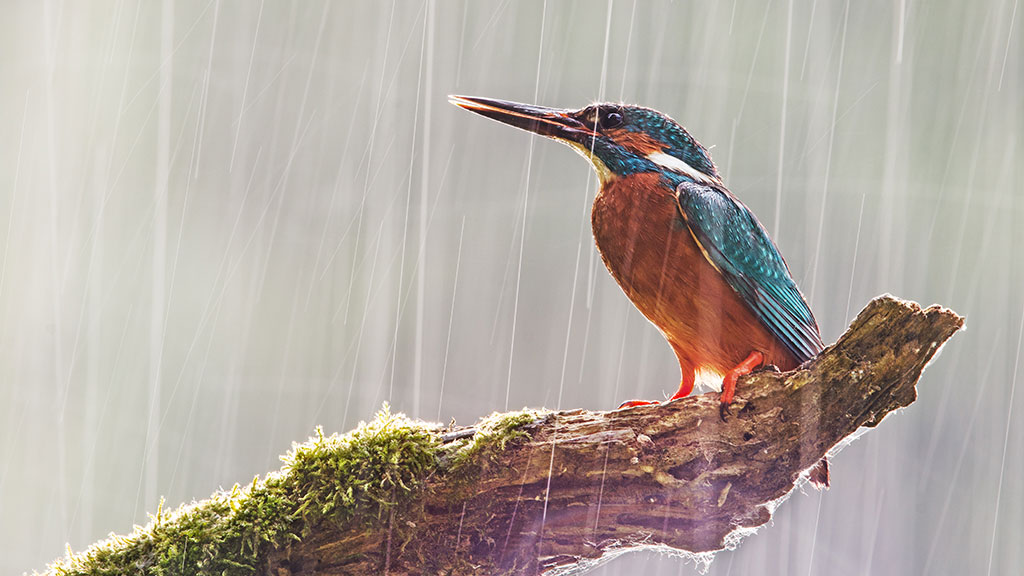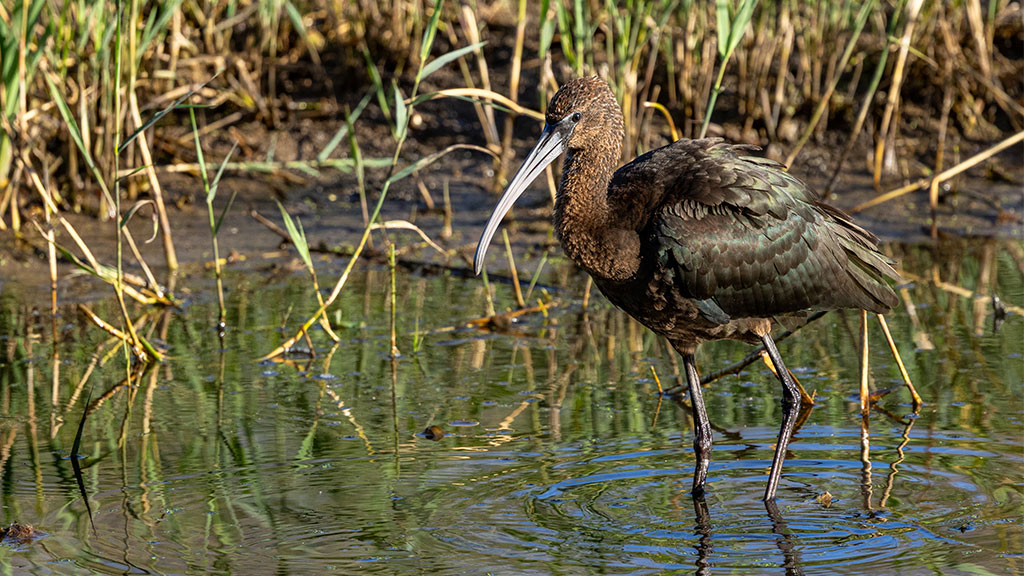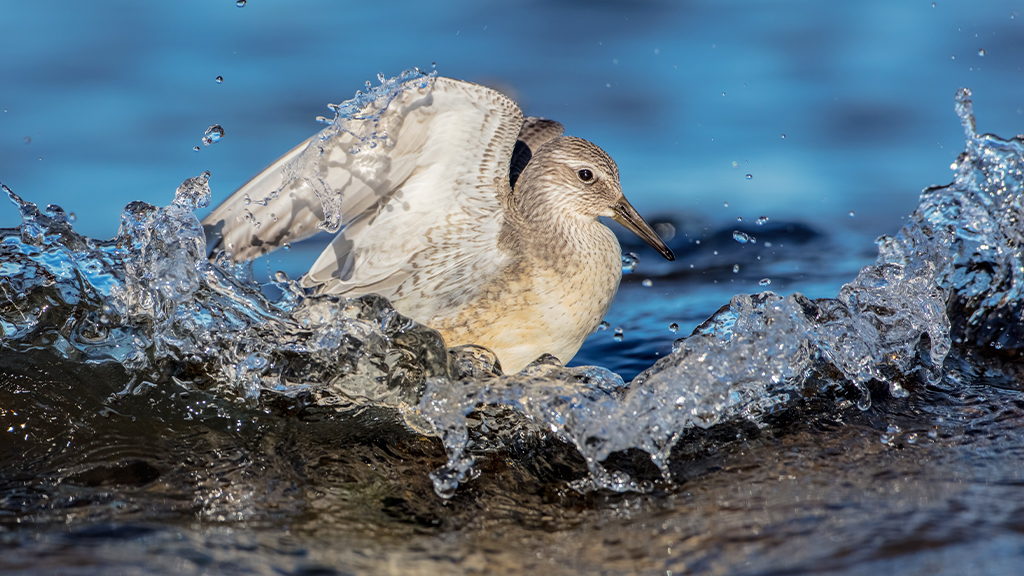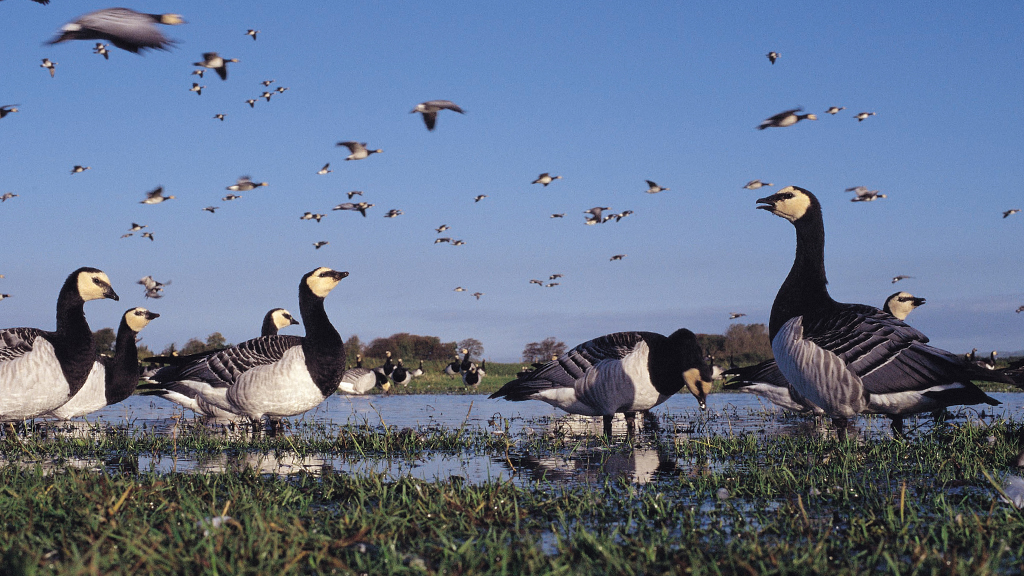The great migration: flyway home
Some of the waterbirds that spend the winter at our centres fly thousands of miles to the UK. Thanks to you, we’re working to protect these magnificent migrants on every step of their incredible journeys.
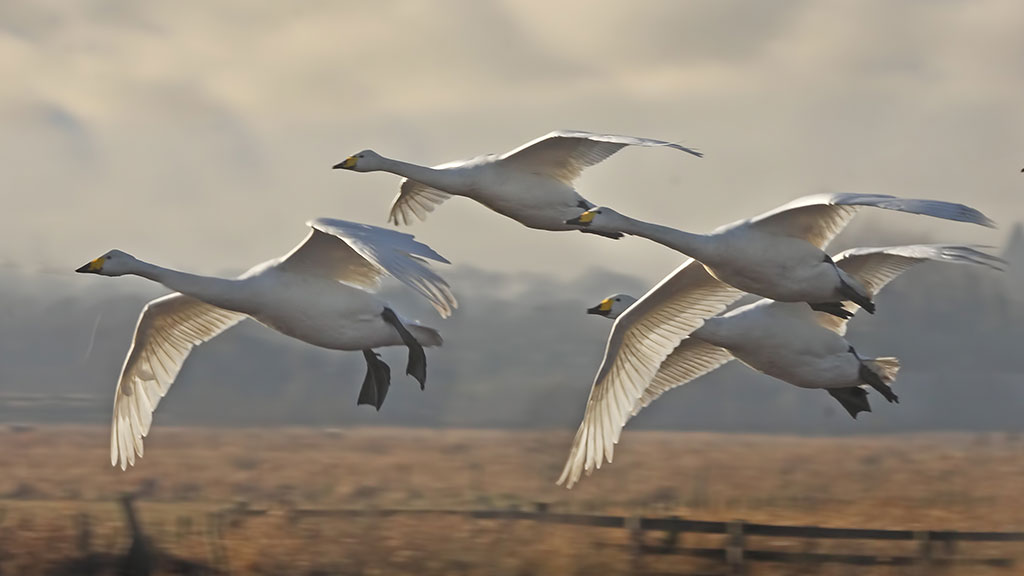
A great white bird lifts off on an autumn day, beating its wings over boggy pools, lava deserts and spouting geysers before setting out across the open ocean. The whooper swan from Iceland, which will touch down at Caerlaverock and many other WWT centres for winter, completes the longest sea crossing of any swan species – flying up to 1,400km without stopping. This bird is just one of a million birds making this journey.
On a northern front that stretches from Canada in the west, through to Greenland, Iceland, northernmost Norway and the tundra of Siberia way out to the east, vast numbers of waterbirds are migrating south to flee the cold. They fly in a funnel, drawn down inexorably to the comparatively warm estuaries and wetlands of the UK. For most, this is their destination. For others, this funnel is an hourglass. They feed for a while here at its waist before descending towards Iberia and Africa.
Who needs a satnav?
Conservationists have long recognised the importance of this avian highway, which we call the Northwest European flyway.
The routes are fixed yet flexible, logical and yet absurd. We are still trying to understand their significance and, crucially, tackle the threats along the way that imperil the very existence of some of these species.
The more we learn about migration routes, the more perplexing they become. More than 10,000 years ago, red knot in Canada followed the melt from the Ice Age to the British Isles. Today, it would seem to be far safer to escape harsh conditions by inching down the coastline of North America, refuelling at estuaries along the way, instead of crossing a storm-tossed ocean. But as Geoff Hilton, our Head of Conservation Science, explains: "Red knots don’t have maps. They’re just doing what they’ve always done. It looks daft – it probably is daft – but tradition is strong."
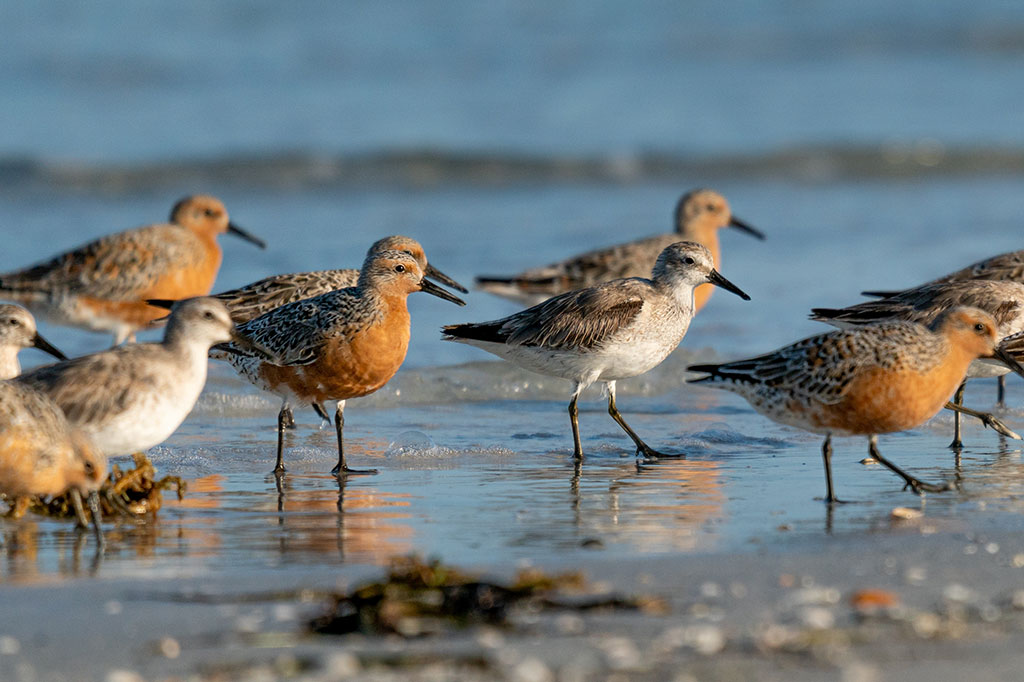
Every red knot you see huddled on an estuary this autumn has its own built-in satnav. Although they all look identical, they may have come here by different routes from Canada, Greenland, Iceland or Siberia. Some may feed up for only a few weeks before flying on towards West Africa. In common with many other species, red knot have multiple flyways, and individual populations have discrete aerial pathways. We cannot see them, but they are there.
Even more puzzling is an estuary-feeding black-tailed godwit on the south coast of England. Is it a migrant from Iceland, or did it hatch at Welney? The Icelandic bird will stay here all winter, but the UK-raised godwit risks its life to fly to West Africa. You have to wonder why they make such a journey when surely everything a godwit needs is right here.
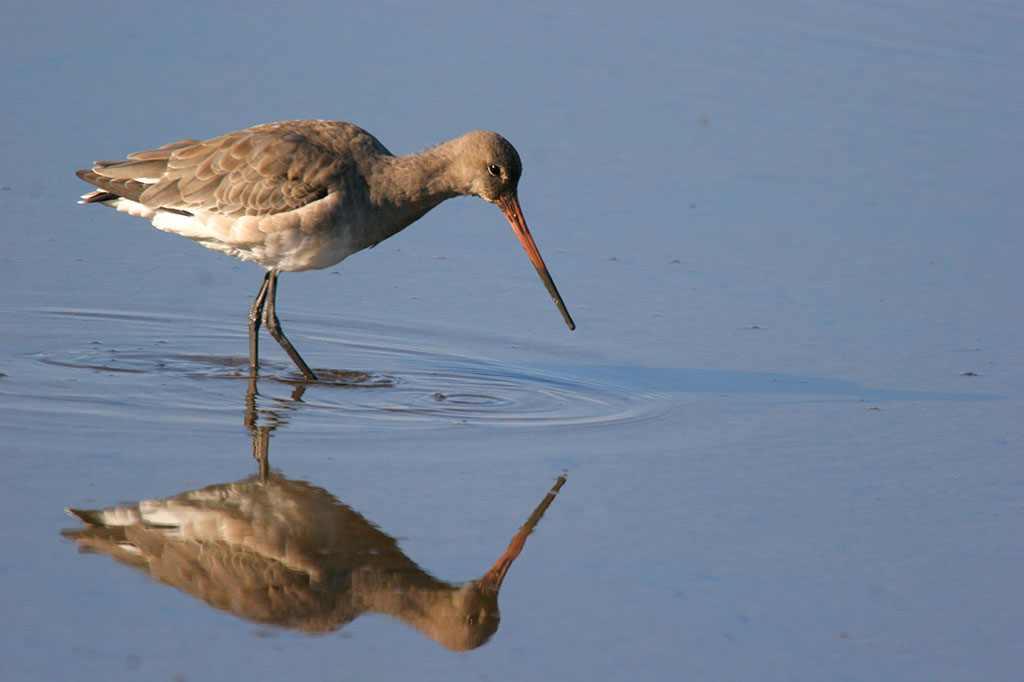
Against all odds
Life for the birds on the flyway today is a story of past successes, present problems and future uncertainty. The positives are incredibly positive. Numbers of whooper swans and Svalbard barnacle geese have soared on the Solway. Geoff explains: "They have benefited from reduced and better-regulated hunting, an increase in food at their wintering grounds and the creation of wildfowl refuges such as Special Protection Areas that save them from disturbance. The Svalbard barnacle goose may still be recovering from just after World War II, when the world population was down to just a few hundred birds. Only shooting bans and the establishment of a refuge at Caerlaverock saved this goose from global extinction."
The flyway is only as strong as its weakest link and, in addition to natural hazards, humans present a whole range of threats along the way. Many of the wetlands that act as vital staging posts on the migrants’ long journeys are blighted by eutrophication – as aquatic plants are replaced by algal blooms, often caused by run-off from agricultural fertilisers, the aquatic insects that eat the plants, and the waterbirds that eat either the plants or the insects, are denied food. It’s an issue that affects the whole land-linked route from the Baltic countries to the UK.
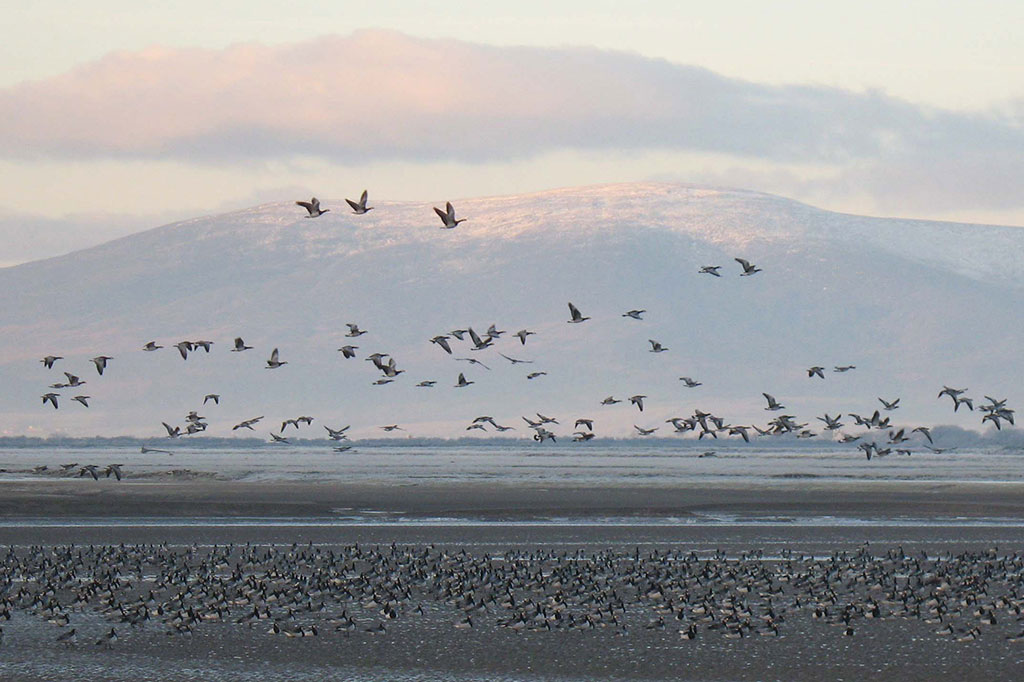
Facing the dangers
There are unseen and largely unquantifiable killers among the fishing nets that drown pochards, scoters, longtailed ducks and any other bird that dives for its food. Current research suggests that collisions with wind farms are generally so rare that they are not a problem for most waterbird populations; we are much less sure about power lines that act as invisible obstacles pinned up in the sky.
Unknown numbers of ground-feeding birds are snaffled by introduced raccoons, raccoon dogs and mink in Fennoscandia and elsewhere that have escaped from fur farms. And natural gregariousness, including the flocking behaviour that pulls wildfowl together at refuges, can bring death when bird flu spreads.
Hunting remains a tricky issue. In most parts of Europe, we simply don’t know how many birds get shot, so it’s impossible to make any kind of management decisions about what numbers are sustainable. Not all the hunting is legal. Greenland white-fronted geese are protected along the full length of their migration, but when we examine their bodies, we find that a significant proportion have been shot at some point in their lives. Were these cases of mistaken identity? Sheer ignorance of the law? Or were they deliberate acts flouting the measures taken to protect them?
Geoff is positive about strengthening such protection where it’s lacking: "We’ve built a good infrastructure for protecting waterbird populations across much of western Europe. Now our goal is to make sure that all countries along the flyway can draw on the same level of expertise, the same resources. We want to share what we’ve learned at WWT over the past 75 years and target our efforts in places where we can make the most difference, such as Eastern Europe and West Africa."
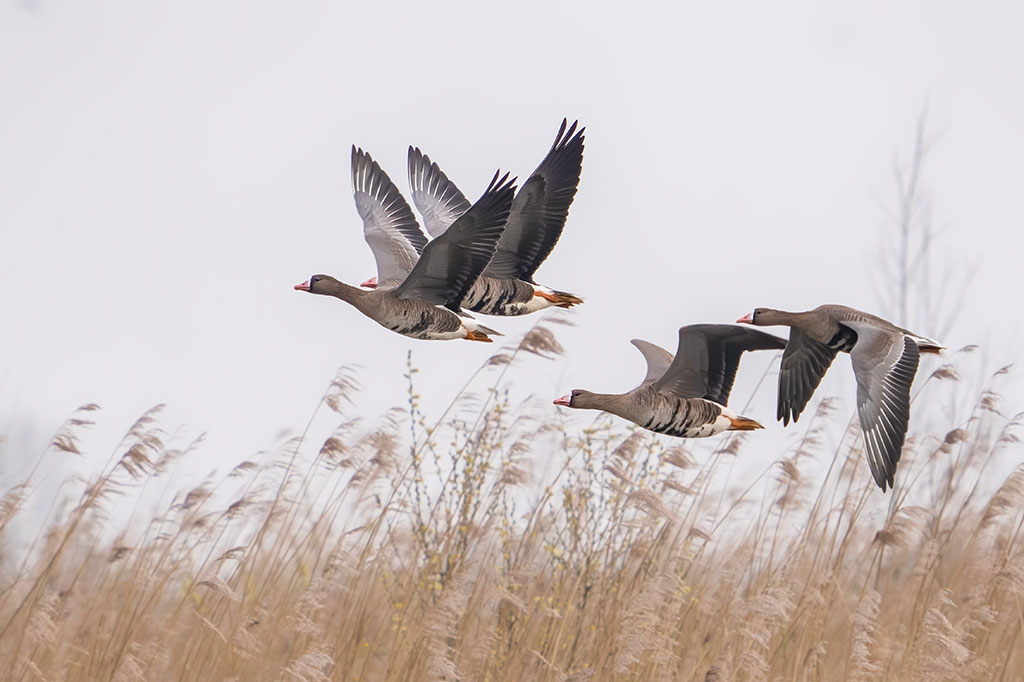
Looking to the future
One extra factor is also rising to prominence. Until the 1980s, 5,000 to 6,000 European white-fronted geese would visit Slimbridge every year. Today, the figure is more like 200. Climate change-influenced milder winters mean that the geese are choosing to winter in continental Europe. A single harsh winter does not bring the birds back; the severe winter of 2009-2010 pushed the Slimbridge count to just over 400 birds. It is clear that the geese are making generation-by-generation decisions about where and when to go.
As the climate changes and alters the nature of habitats, birds on the flyway will be making more of these long-term decisions. As Geoff puts it: "Our plan is to ensure that everything else is good on the flyway, so that the birds are in a better position to cope with the changes that the climate crisis brings. If you can make sure the stepping stones are in good condition, you can help migrant birds make choices about whether to shorten or lengthen their journeys."
Meet our migrating birds
This autumn, visit a WWT site and see our amazing migrants and marvel at the incredible journeys that have brought them to our wetlands. Not a member? Book online and save time on arrival.
Find your nearest wetland centre